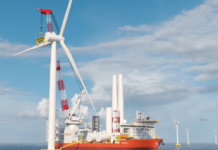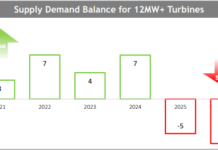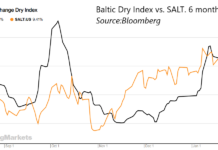by Kidela Capital Group
In spite of the recent global economic slowdown, the growth of new wind energy developments has so far continued unabated. Wind turbine technology has evolved considerably in the last decade, and new wind farms are steadily popping up across the globe. To meet rising demand for renewable, clean sources of energy, the push for more efficient wind energy technologies has moved from a proverbial light breeze just a few years ago, to a steady gale today.
The Global Wind Energy Council (GWEC) recently predicted that the world’s wind power capacity will increase by 160 percent in the next five years, with global installed wind capacity estimated to reach 409 GW by 2014, up from 158.5 GW in 2009.1 This surge in wind energy projects can be attributed to increased demand as governments look for cleaner sources of energy to reduce greenhouse gas emissions and meet growing energy needs.
Yet experts warn of a front of high pressure blowing in from the East, which could effectively calm this storm of development at least in the short term. The newest wind turbine technologies largely depend on rare earth metals, quirky elements that are used to make special magnets that dramatically increase conversion efficiency. Yet the corresponding demand for these materials is hampered by the fact that almost all of the world’s supply is concentrated in China, where strategic investments in rare earth element extraction and refining in the 1980’s has given it cost advantages in the production process and an effective monopoly of the industry.
The GWEC’s prediction indicates the generation of an additional 250.5 GW of wind energy will require 167,000 tonnes of rare earth metals.2 To put that in perspective, China, which currently produces 95 percent of the world’s rare earth elements, only produced 150,000 tonnes of rare earth metals in 2009.
China has shown that it is willing and able to control exports in rare earth metals by restricting supply. This market power is resulting in significant price instability, and is affecting a wide range of industries that rely on the astonishing properties of these elements to produce everything from smart phones to hybrid vehicles.
“Even in the face of a global recession and financial crisis, wind energy continues
to be the technology of choice in many countries around the world. Wind
power is clean, reliable and quick to install, so it is the most attractive
solution for improving supply security, reducing CO2 emissions,
and creating thousands of jobs in the process.”
Steve Sawyer, GWEC Secretary General
China and North America remain the largest two potential markets for wind power expansion. Despite the lagging global economy, this has hit US markets particularly hard, government grants and incentives have kept wind energy growth on track, albeit at a conservative rate. Although there are a number of large-scale projects in the regulatory approval stage In Canada, the adoption rate and scale of investment is amongst the provincial governments can be described as inconsistent.
Conversely, China’s wind energy developments have expanded at an incredible rate. In 2009, China accounted for one third of the world’s new wind farm development. That year, the country generated 25.9 GW of wind power, overtaking Germany as the world’s largest producer.
China has announced that in the next ten years it will construct an additional 133 GW of wind turbine generated electricity. This plan will inevitably contribute to a steep rise in demand for use of Chinese neodymium and other rare earth metals just to service the country’s domestic wind turbine market.3 To account for this, China will be forced to either ramp up production or slash exports. This increased internal demand could be at the heart of much of the recent tightening of export quotas and shipments by China. The effect of their actions has fundamentally shaken the countries around the world out of their slumber with respect to the stability of their REE supplies.
Neodymium is one of the rare earth metals typically used in permanent magnets. Modern high-efficiency neodymium magnets for wind turbines use close to half a metric tonne of the element per turbine. Other rare earth metals used in wind turbines include praseodymium, dysprosium, and terbium.
Earlier versions of wind turbine technology relied on electromagnets, which use copper coils fed with electricity from the generator itself. While effective, these generators were bogged down with excess weight. Companies such as Siemens (SI) and General Electric (GE) later developed turbines that use direct drive generators using permanent magnets. The motors turn at the same speed as the rotors and therefore have to be much larger to develop the same power. Yet the weight of the larger unit is significantly less. By using neodymium in the magnets, the weight of the generator can be further reduced. According to experts at Holland’s Delft University of Technology, a 15-mm-thick segment of permanent magnets can generate the same magnetic field as a 10- to 15-cm section of copper coils.4
Europe was an early adopter of wind power technology, and European governments have focused strongly on sustainable energy policy in recent years. But Europe’s capacity is expected to remain somewhat stagnant in the near future. By 2014, it is expected that Asia will surpass Europe in total wind energy generation. South Africa has also recently disclosed plans for an aggressive foray into the wind power industry, with two huge projects in the assessment stage.
The reality is that China, despite backing off from earlier suggestions that it will limit exports, will be forced to adjust if it hopes to meet its domestic targets. New wind projects currently in the assessment stage in the US alone could soon outstrip the supply of Chinese rare earth exports. Therefore it is incumbent on the industry to identify, secure and develop new non-Chinese sources of these valuable materials. “That’s a serious issue,” says Henrik Stiesdal, chief technology officer of Siemens’s wind power unit.5
The reality is wind turbines can be built without rare earths, but the older permanent magnet technology is dramatically less efficient than those built with neodymium-based magnets, and depending on the project, their return on investment may be too far off to be considered.
Not everyone is convinced the drop in the supply of neodymium will halt the wind turbine industry. Though rare-earth magnets will be employed for a significant percentage of the large electrical generators used in wind turbines, smaller units may be engineered using other technologies that do not use rare earths. Ferrite magnets, for example, while much less efficient than neodymium magnets, are also considerably cheaper and in some cases may close the efficiency gap.6
It is clear that while direct drive technology using neodymium is superior to older wind turbine technology, its potential is ultimately dependent on the ability of the industry to develop and secure new sources of supply rare earth metals.
1, 2 – Global Wind Market Hits 155 GW
3 – The Battle Over Rare Earth Metals
4, 5 – Wind Turbines Shed Their Gears
6 – Magnetics Business & Technology – Summer 2009 Edition (PDF)
Related articles: Rarer Rare Earths Are Not Going To Sink the Wind Power Sector
Can America Regain the Rare Earths Crown?







